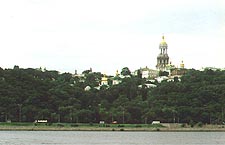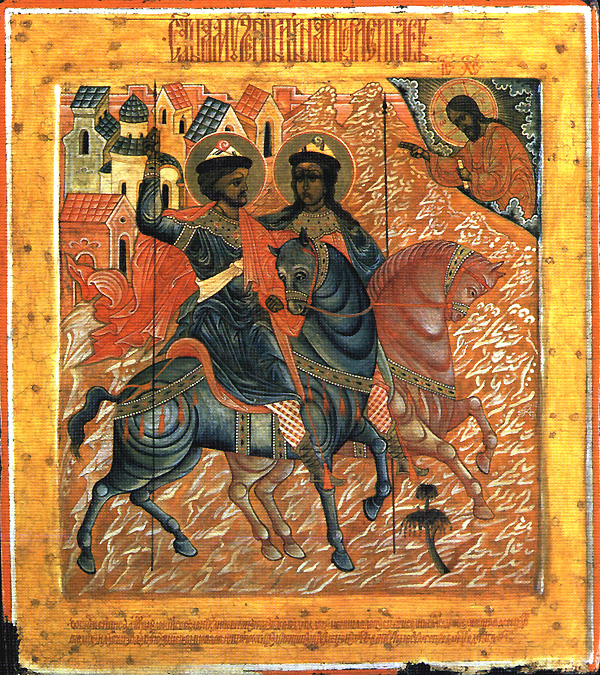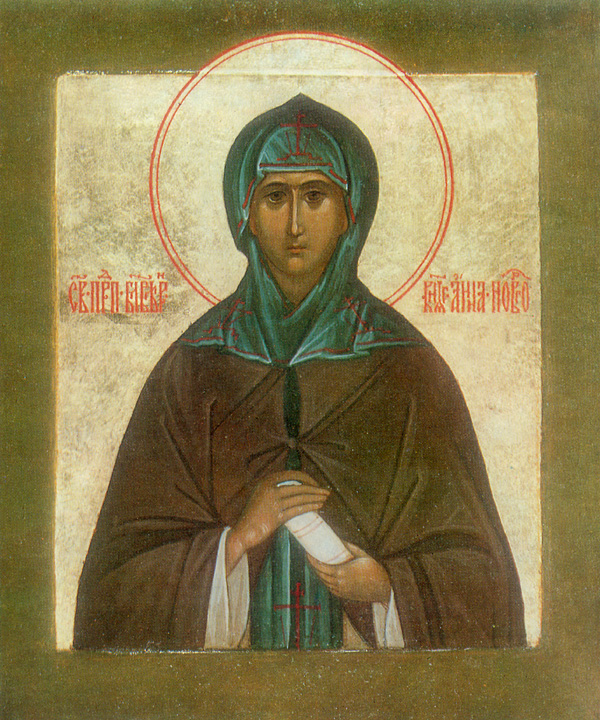Kievan Russia

In Kievan Russia in the 11th century the new Christian Faith was flourishing. Saint Anthony (d. 1073) founded the famous Monastery of the Caves in Kiev, the Kievo-Pecherskaya Lavra. Saint Theodosius (d. 1074), its greatest saint, came to be called the “Founder of Russian monasticism.” Saint Theodosius followed the example of the humble Christ of the gospels in an evangelical form of spiritual life. This form has come to be known as Russian kenoticism, which means a life of self-emptying humility and love for the brethren (cf. Phil 2.6). The Kievan Monastery of the Caves was a major center of Christian charity and social concern, as well as of spiritual and intellectual labor and enlightenment.
Saints Boris and Gleb

Among the saints of Kiev are numbered the brothers Boris and Gleb, sons of Saint Vladimir. They refused to fight their elder brother Sviatopolk in a power struggle after the death of their father in 1015. Although they could have fought against Sviatopolk, and were undoubtedly encouraged to do so by their warriors, the two young brothers refused to fight, so as not to take up arms against their brother, and in order to save the lives of many on both sides. As “Passion-Bearers,” turning the other cheek to endure completely innocent suffering, and laying down their lives so that others might live, Saints Boris and Gleb were canonized by the Russian Church in 1020—just five years after their deaths. These first Russian saints have been venerated and loved with special devotion by their fellow Russians to this day.
Yaroslav the Wise and Saint Anna of Novgorod
Yaroslav (978–1054) was another son of Saint Vladimir. He became the Grand Prince of Kiev in 1019 upon defeating the wicked Sviatopolk in battle. He ruled well for 35 years until his death in 1054. During his reign Kiev flourished as a major center of trade, and his building program made his capital the grandest city in Europe, after Constantinople. His crowning achievement was the construction of the Cathedral of Saint Sophia that still stands today. He also assembled many translators to continue the work of rendering the vast treasure of theological writings and hymnography of the Greeks into Slavonic. And in his time, Russian princes and princesses began marrying into many of the royal families of Western Europe.

Prince Yaroslav’s wife is a saint in the Church—she is venerated as Saint Anna of Novgorod. She was the daughter of the first Christian king of Sweden, King Olaf Sketkonung. She took an active part along with her husband in the rule of their domain, sometimes even entering into battle with him, and at other times helping to arrange peace treaties with enemies of the state. They had seven sons and three daughters, all of whom the great orator Hilarion, who later became the Metropolitan of Kiev, declared to be devoted to the Christian Faith. One of them, Vladimir, is also a saint in the Church. Shortly before she died, the princess took the monastic schema and entered the monastery that she and her husband had built in Kiev, manifesting thereby her deep piety and humility.
